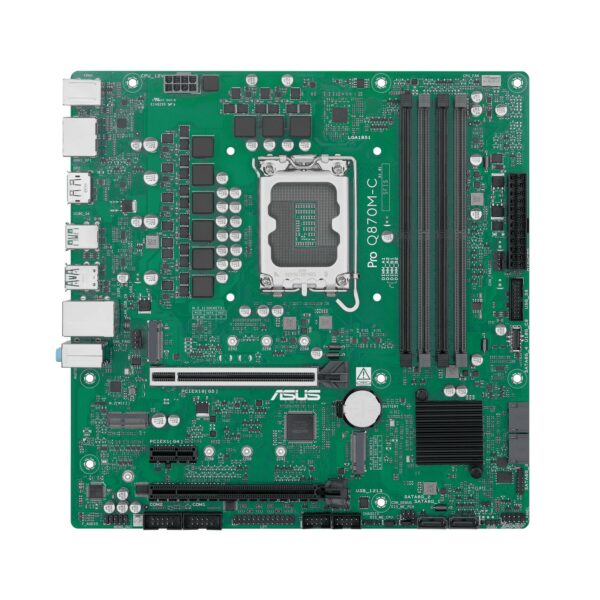
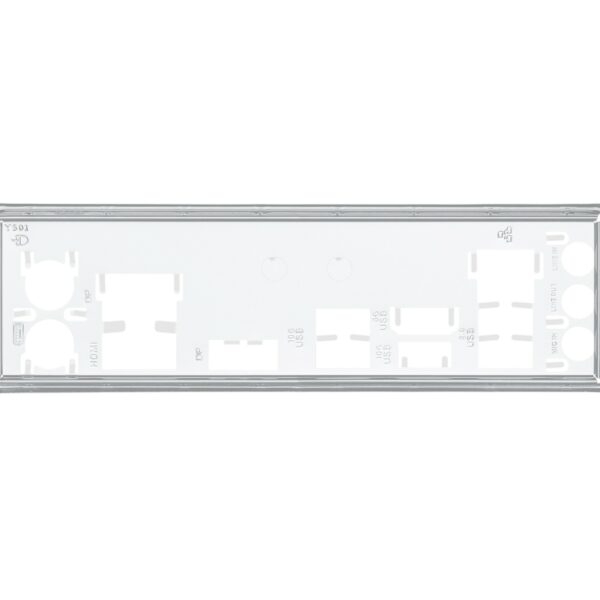
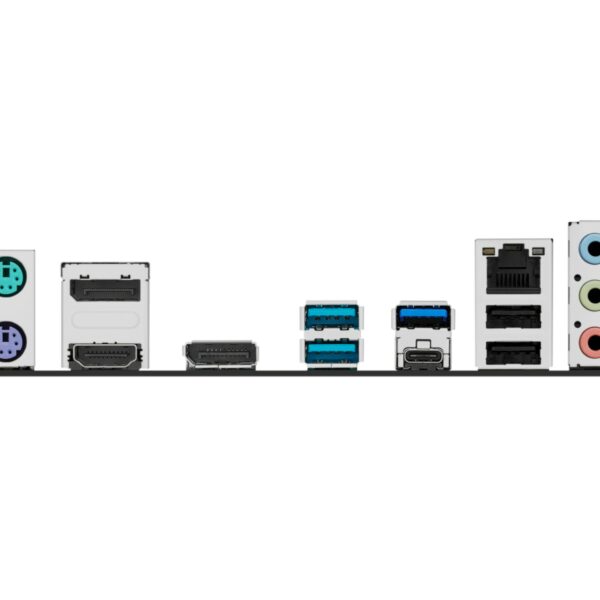
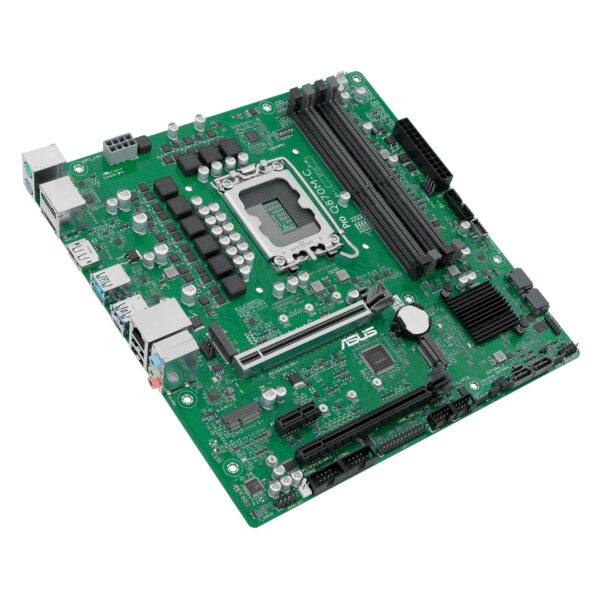
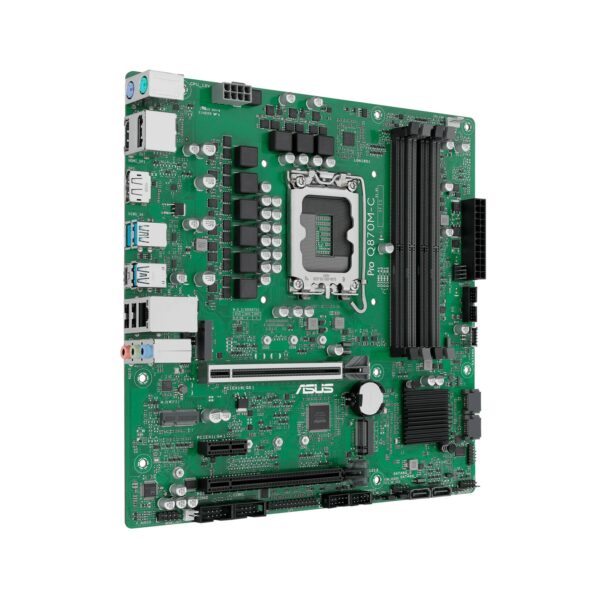
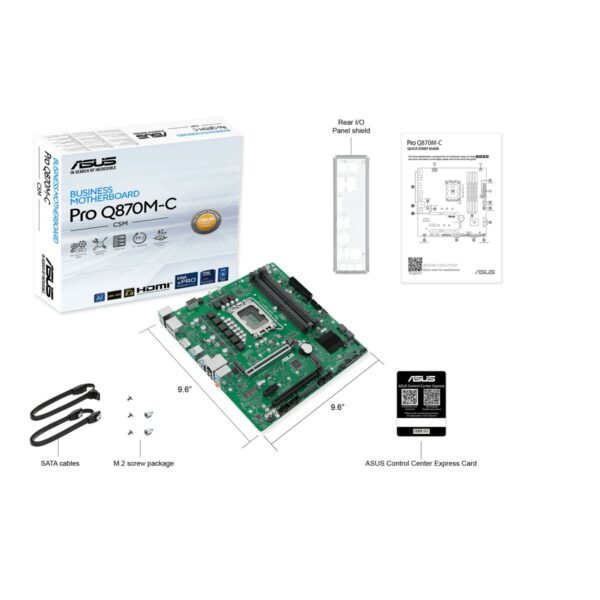


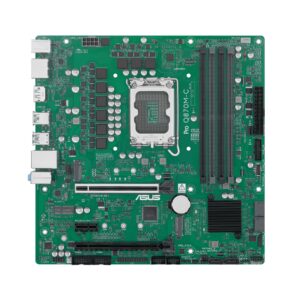
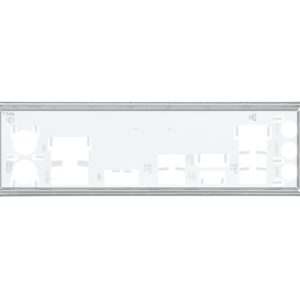
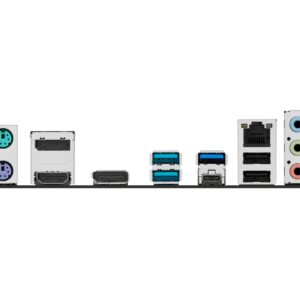
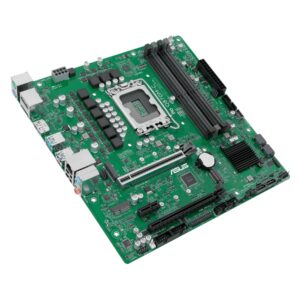
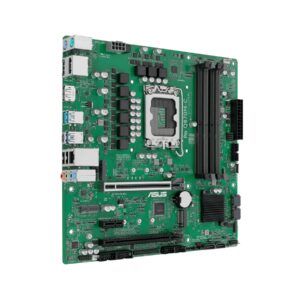
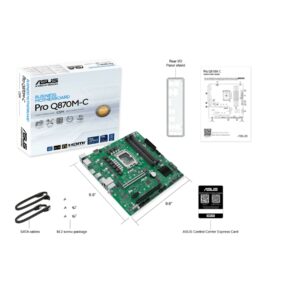
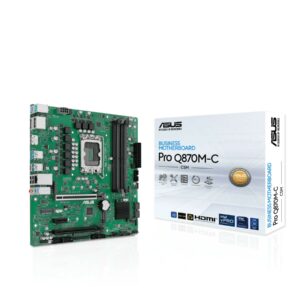

ASUS PRO Q870M-C CSM (1851) (D)
0 out of 5
220 €
- Socket: LGA 1851 (Socket V1)
- Internal memory max.: 256 GB
- Form factor: micro ATX
- Përshkrim
- Përshtypje (0)
- Store Policies
- Enquiries
Përshkrim
Specs
Processor
Processor manufacturer
The manufacturer that produced the processor.
Intel
Processor socket
Mechanical component(s) that provides mechanical and electrical connections between a microprocessor and a printed circuit board (PCB). This allows the processor to be replaced without soldering.
LGA 1851 (Socket V1)
Compatible processor series
A processor which is compatible with this device, belongs to a ‘series’ which is part of ‘family’ e.g Celeron D, Celeron G, Celeron M, or, in some cases, is the same as ‘family’.
Intel Core Ultra (Series 2)
Memory
Supported memory types
Types of memory which can be used with the product.
DDR5-SDRAM
Number of memory slots
4
Memory slots type
A memory slot, also known as a memory socket or RAM slot, is what allows computer memory (RAM) to be inserted into the computer. Depending on the motherboard, there will usually be 2 to 4 memory slots (sometimes more on high-end motherboards). The most common types of RAM are SDRAM and DDR for desktop computers and SODIMM for laptop computers, each having various types and speeds.
DIMM
Memory channels
Dual-channel
ECC сompatibility
Non-ECC
Supported memory clock speed (max)
6400 MHz
Maximum internal memory
The maximum internal memory which is available in the product.
256 GB
Unbuffered memory
Storage controllers
Supported storage drive types
The type of storage drives the device is compatible with.
HDD & SSD
Supported storage drive interfaces
M.2, SATA III
Number of HDDs supported
The total number of hard drives that can be used in/with this product.
4
Number of storage drives supported
How many storage drives can be fit into the product at once.
6
RAID support
The device uses RAID, which is a storage technology that combines multiple disk drive components into a logical unit for the purposes of data redundancy and performance improvement. Data is distributed across the drives in one of several ways, referred to as RAID levels, depending on the specific level of redundancy and performance required.
RAID levels
RAID is a storage technology that combines multiple disk drive components into a logical unit for the purposes of data redundancy and performance improvement. Data is distributed across the drives in one of several ways, referred to as RAID levels, depending on the specific level of redundancy and performance required.
0, 1, 5, 10
Graphics
Parallel processing technology support
Parallel processing technology is the simultaneous use of more than one CPU or processor core to execute a program or multiple computational threads. Ideally, parallel processing makes programs run faster because there are more engines (CPUs or Cores) running it. In practice, it is often difficult to divide a program in such a way that separate CPUs or cores can execute different portions without interfering with each other. Most computers have just one CPU, but some models have several, and multi-core processor chips are becoming the norm. There are even computers with thousands of CPUs.
Not supported
On-board graphics card
Graphics hardware which is built into the motherboard or CPU, as opposed to a separate graphics adapter (video card). On-board graphics uses CPU and RAM for graphics processing.
Internal I/O
USB 2.0 connectors
The end of a cable with a USB 2.0 connector. USB 2.0 was released in April 2000 (now called “Hi-Speed”), adding higher maximum signaling rate of 480 Mbit/s (effective throughput up to 35 MB/s or 280 Mbit/s), in addition to the “USB 1.x Full Speed” signaling rate of 12 Mbit/s. USB 2.0 connectors are usually colored black.
2
USB 3.2 Gen 1 (3.1 Gen 1) connectors
This is a connector (normally attached to a cable) for USB 3.0. USB 3.0 is the second major revision of the Universal Serial Bus (USB) standard for computer connectivity. First introduced in 2008, USB 3.0 adds a new transfer mode called “SuperSpeed,” (distinguishable from USB 2.0 by either the blue colour of the port or the initials SS) capable of transferring data at up to 5Gbit/s—more than ten times as fast as the 480 Mbit/s top speed of USB 2.0.
1
USB 3.2 Gen 2 (3.1 Gen 2) connectors
1
Number of SATA III connectors
Serial ATA (Advanced Technology Attachment) (SATA) is a computer bus interface that connects host bus adapters to mass storage devices such as hard disk drives and optical drives. SATA III (revision 3.x) interface, formally known as SATA 6Gb/s, is a third generation SATA interface running at 6.0Gb/s. The bandwidth throughput, which is supported by the interface, is up to 600MB/s. This interface is backwards compatible with SATA 3 Gb/s interface.
4
Front panel audio connector
Front panel connector
ATX Power connector (24-pin)
CPU fan connector
Number of CPU fan connectors
1
Number of chassis fan connectors
2
EPS power connector (8-pin)
Number of COM connectors
2
12V power connector
Rear panel I/O ports
USB 2.0 ports quantity
Number of USB 2.0 ports (connecting interfaces) in the device. USB 2.0 was released in April 2000 (now called “Hi-Speed”), adding higher maximum signaling rate of 480 Mbit/s (effective throughput up to 35 MB/s or 280 Mbit/s), USB 2.0 ports are usually black.
2
USB 3.2 Gen 1 (3.1 Gen 1) Type-A ports quantity
1
Rear panel I/O ports
USB 3.2 Gen 2 (3.1 Gen 2) Type-A ports quantity
2
USB 3.2 Gen 2 (3.1 Gen 2) Type-C ports quantity
Number of USB 3.1 (3.1 Gen 2) ports with Type-C connector. USB 3.1 (3.1 Gen 2) is USB interface version which supports transfer rate up to 10 Gbit/s (SuperSpeed+). USB Type-C connector has symmetrical design architecture and compatible with Thunderbolt 3 interface.
1
Ethernet LAN (RJ-45) ports
Number of Ethernet LAN (RJ-45) ports (connecting interfaces) in the device. Ethernet LAN (RJ-45) ports allow a computer to connect to the ethernet.
1
PS/2 ports quantity
The number of PS/2 connectors for keyboards and mice. Its name comes from the IBM Personal System/2.
2
HDMI ports quantity
The number of sockets (ports) for HDMI connections. HDMI (High-Definition Multimedia Interface) is a compact audio/video interface for transferring uncompressed video data and compressed/uncompressed digital audio data from a HDMI-compliant device (“the source device”) to a compatible computer monitor, video projector, digital television, or digital audio device. HDMI is a digital replacement for existing analog video standards.
1
DisplayPorts quantity
Number of DisplayPorts. A DisplayPort is a digital display interface developed by the Video Electronics Standards Association (VESA). The interface is primarily used to connect a video source to a display device such as a computer monitor, though it can also be used to carry audio, USB, and other forms of data.
2
Microphone in
The socket where a microphone is connected to the device.
USB connector type
The type of USB connector/port that this product has.
USB Type-A, USB Type-C
Network
Ethernet LAN
An Ethernet LAN (Local Area Network) interface is present, for a wired conection via a cable.
Ethernet interface type
Gigabit Ethernet
LAN controller
Intel® I219-LM
Wi-Fi
Popular technology that allows an electronic device to exchange data or connect to the internet wirelessly using radio waves.
Features
Motherboard chipset
The chipset connects the microprocessor to the rest of the motherboard.
Intel Q870
Audio output channels
An audio output channel is an electric circuit which acts as a path for a signal produced by a device. A device may have several audio output channels.
7.1 channels
Product colour
The colour e.g. red, blue, green, black, white.
Multicolour
Component for
What this product is used as a part of (component for).
PC
Motherboard form factor
Design of the motherboard (ATX, BTX etc).
micro ATX
Motherboard chipset family
The category of motherboard chipset e.g. Intel, AMD.
Intel
Windows operating systems supported
Windows vesions wich can be used with the device.
Windows 10 x64, Windows 11
Expansion slots
PCI Express x1 (Gen 4.x) slots
1
PCI Express x16 (Gen 4.x) slots
1
Number of M.2 (M) slots
2
BIOS
BIOS memory size
256 Mbit
Packaging data
Package width
The distance from one side of the packaging to the other.
270 mm
Package depth
The distance from the front to the back of the packaging.
263 mm
Package height
The distance from the top to the bottom of the packaging.
51.5 mm
Package weight
Weight of the packaged product.
889.03 g
Weight & dimensions
Width
The measurement or extent of something from side to side.
244 mm
Depth
The distance from the front to the back of something.
244 mm
Height
The measurement of the product from head to foot or from base to top.
50 mm
Other features
Weight
Weight of the product without packaging (net weight). If possible, the net weight is given including standard accessories and supplies. Please note that sometimes the manufacturer leaves out the weight of accessories and/or supplies.
550.6 g
Bëhuni i pari që shqyrton “ASUS PRO Q870M-C CSM (1851) (D)” Anuloje përgjigjen
General Enquiries
There are no enquiries yet.
Related Products
Pjesë për Kompjuter, Procesor
Intel Box Core i5 Processor i5-12400 2,50Ghz 18M Alder Lake-S
0 out of 5
166 €
Model: i5-12400
Series: Intel® Core™ i5
Cores: 6
Socket: LGA 1700
Boost frequency: 4.4...
Pjesë për Kompjuter, Procesor
Intel Tray Core i3 Processor i3-12100 3,30Ghz 12M Alder Lake-S
0 out of 5
105 €
Model: i3-12100
Series: Intel® Core™ i3
Cores: 4
Socket: LGA 1700
Boost frequency: 4.3...
Pjesë për Kompjuter, Procesor
Intel Tray Core i5 Processor i5-12400 2,50Ghz 18M Alder Lake-S
0 out of 5
154 €
Model: i5-12400
Series: Intel® Core™ i5
Cores: 6
Socket: LGA 1700
Boost frequency: 4.4...
Pjesë për Kompjuter, Procesor
Intel Tray Core i7 Processor i7-12700 2,10Ghz 25M Alder Lake-S
0 out of 5
272 €
Model: i7-12700
Series: Intel® Core™ i7
Cores: 12
Socket: LGA 1700
Boost frequency: 4.9...
Pjesë për Kompjuter, Procesor
Intel Tray Core i7 Processor i7-13700K 3,40Ghz 30M Raptor Lake
0 out of 5
318 €
Model: i7-13700K
Series: Intel® Core™ i7
Cores: 16
Socket: LGA 1700
Boost frequency: 5.4...

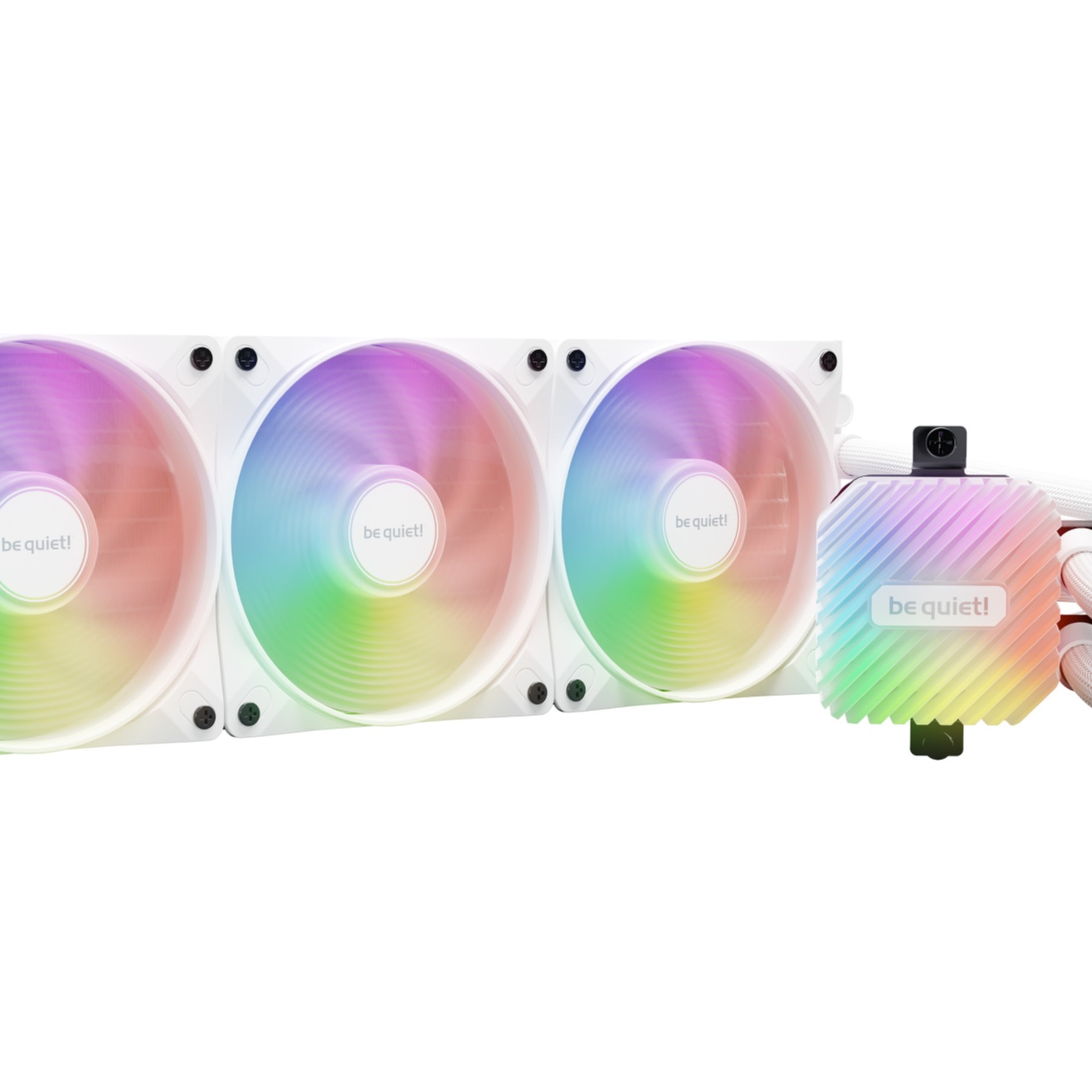
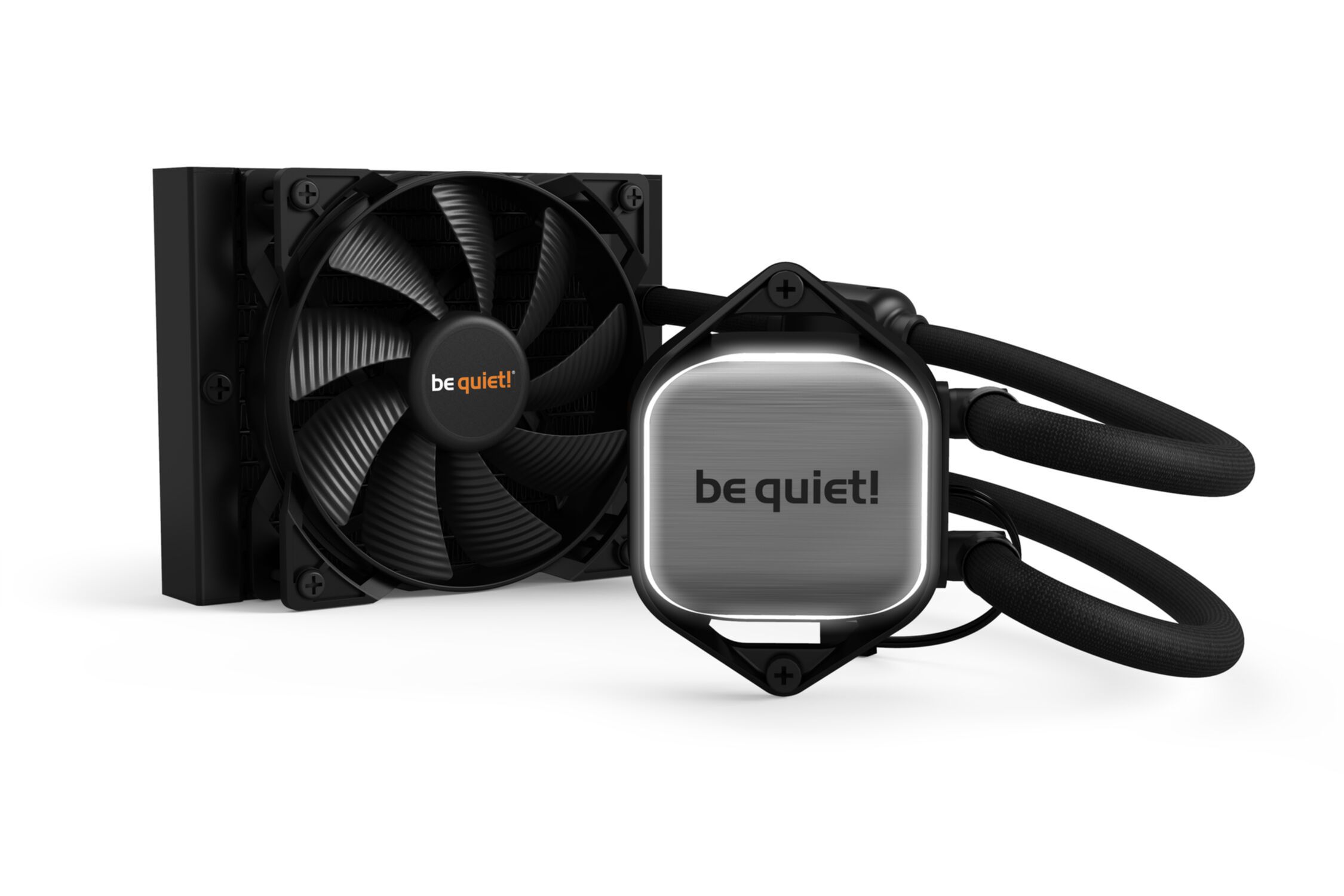



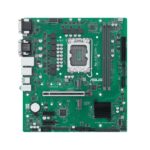
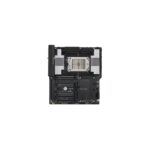
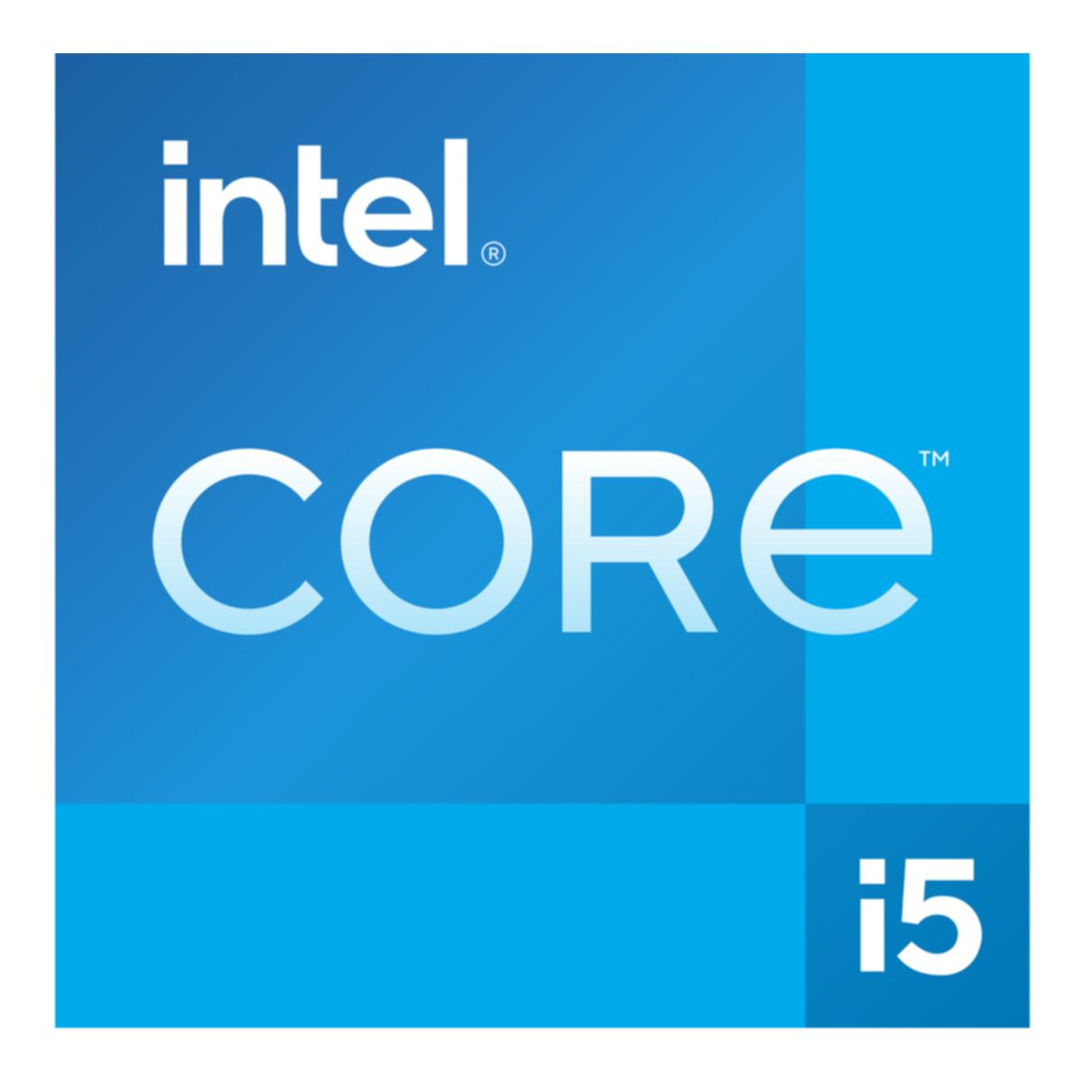

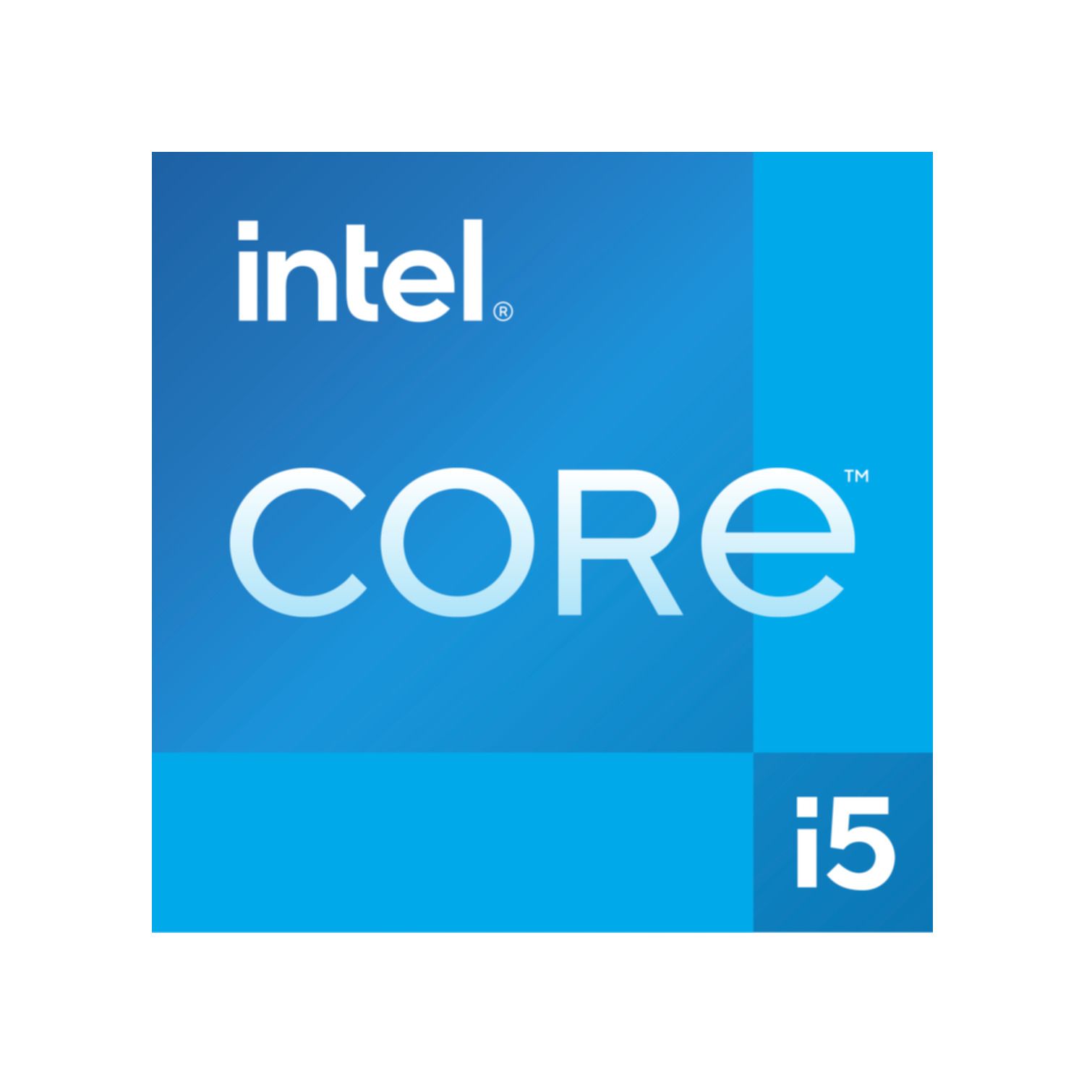
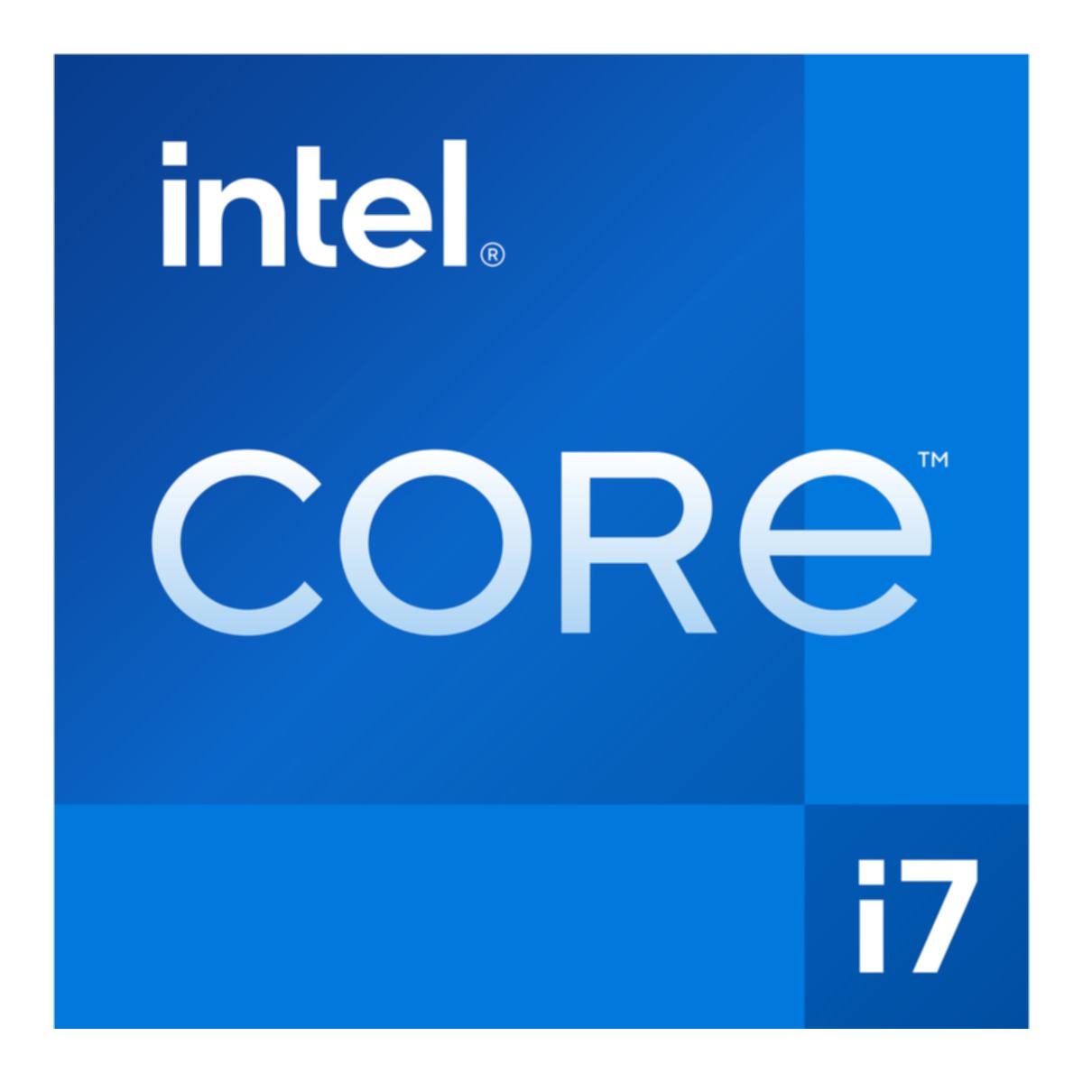
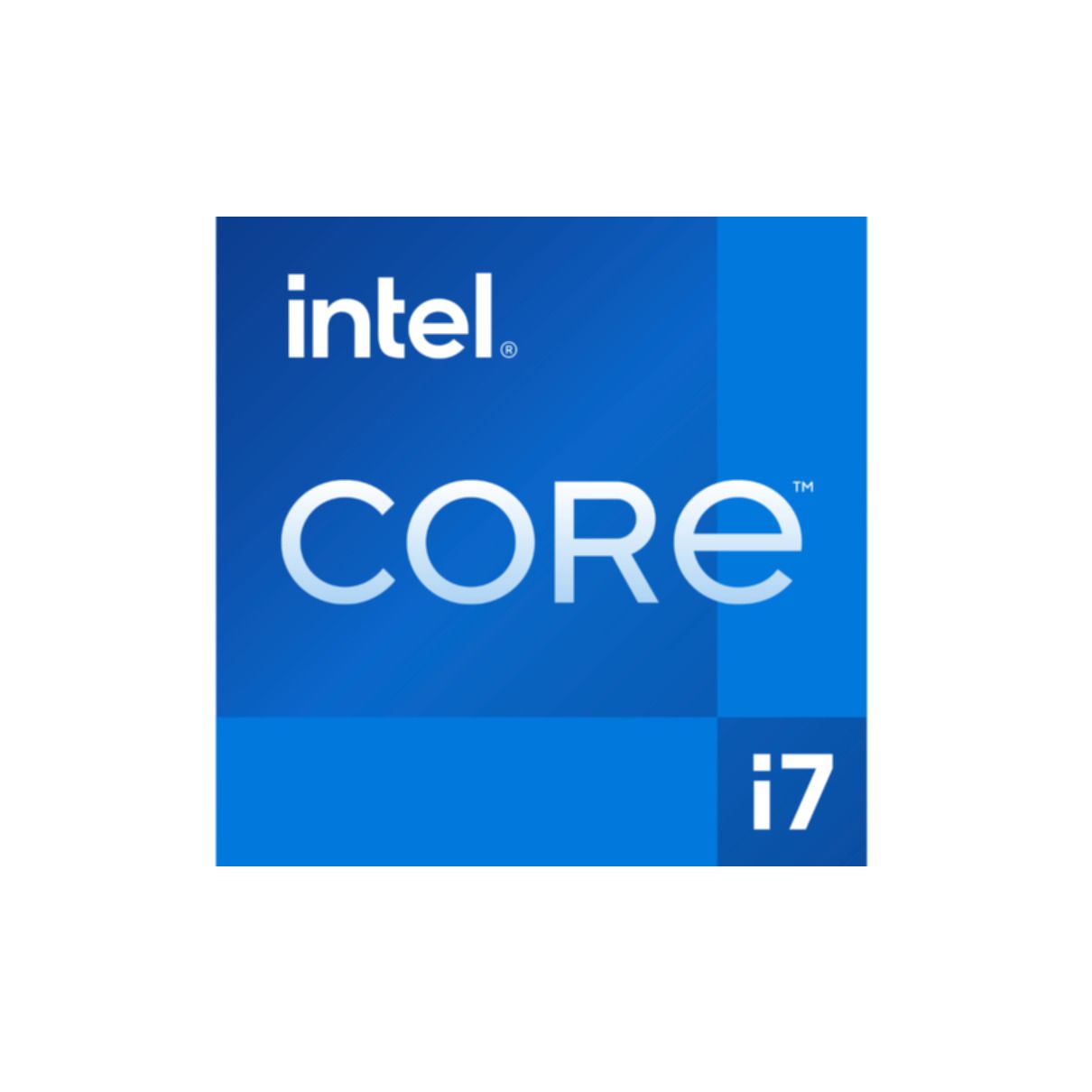
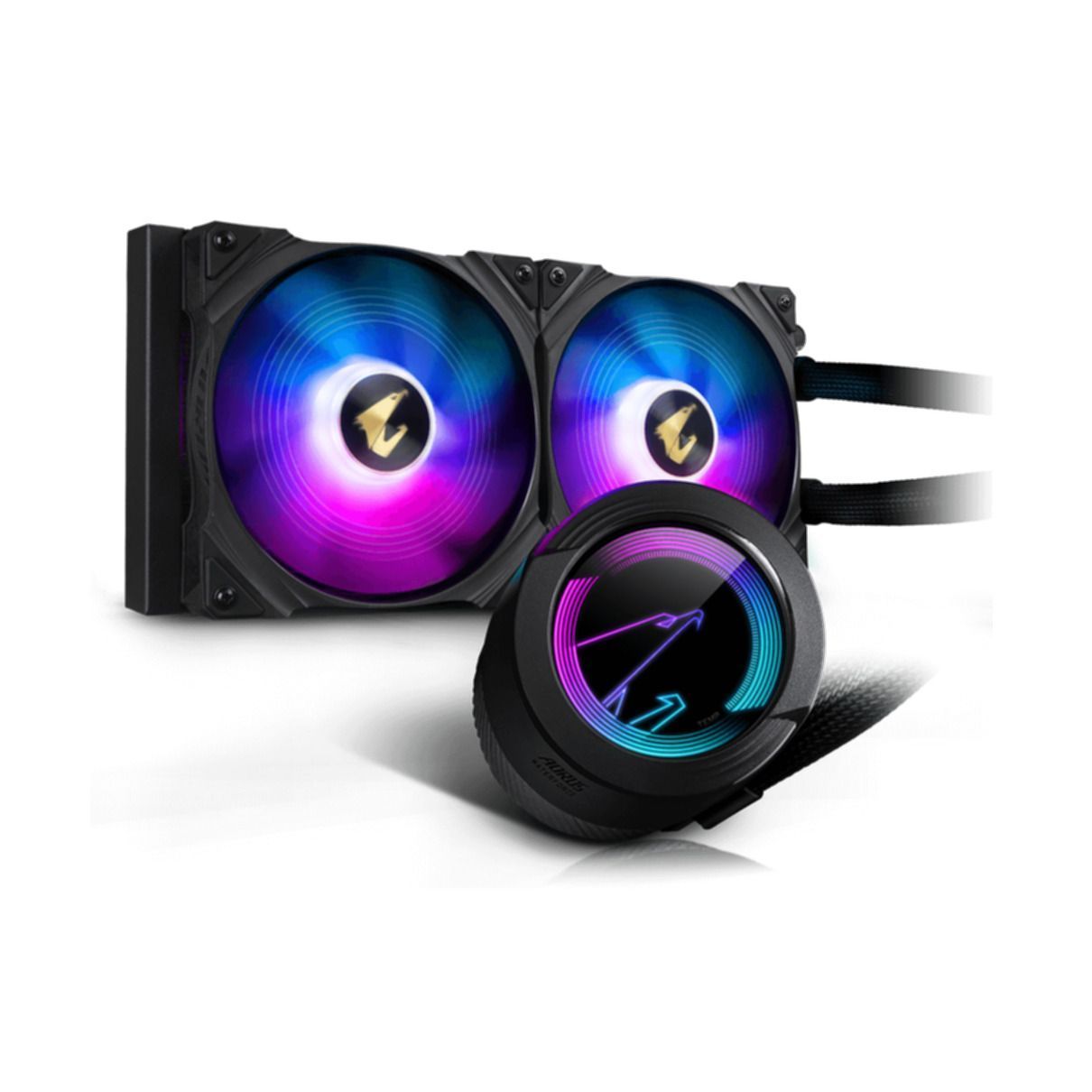
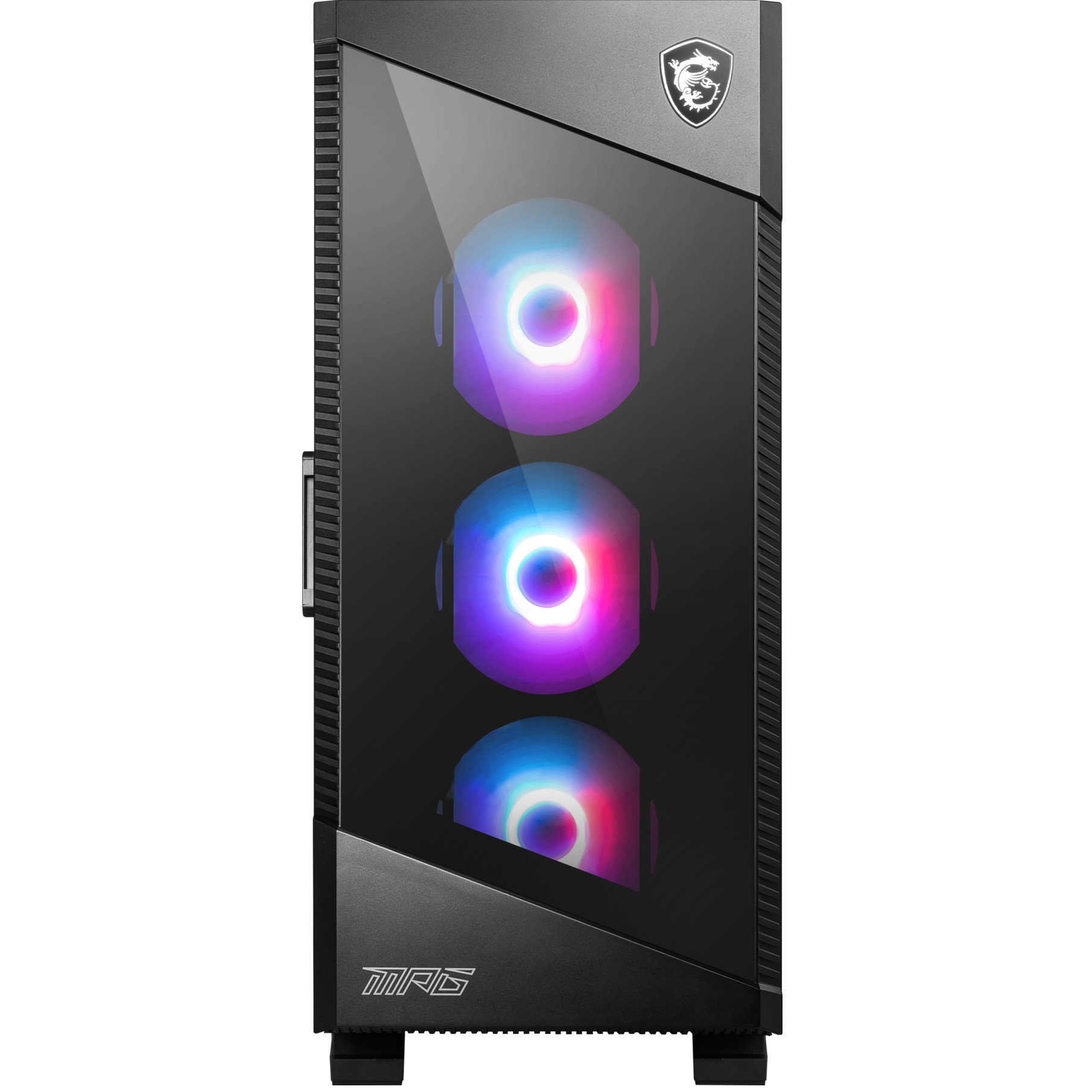
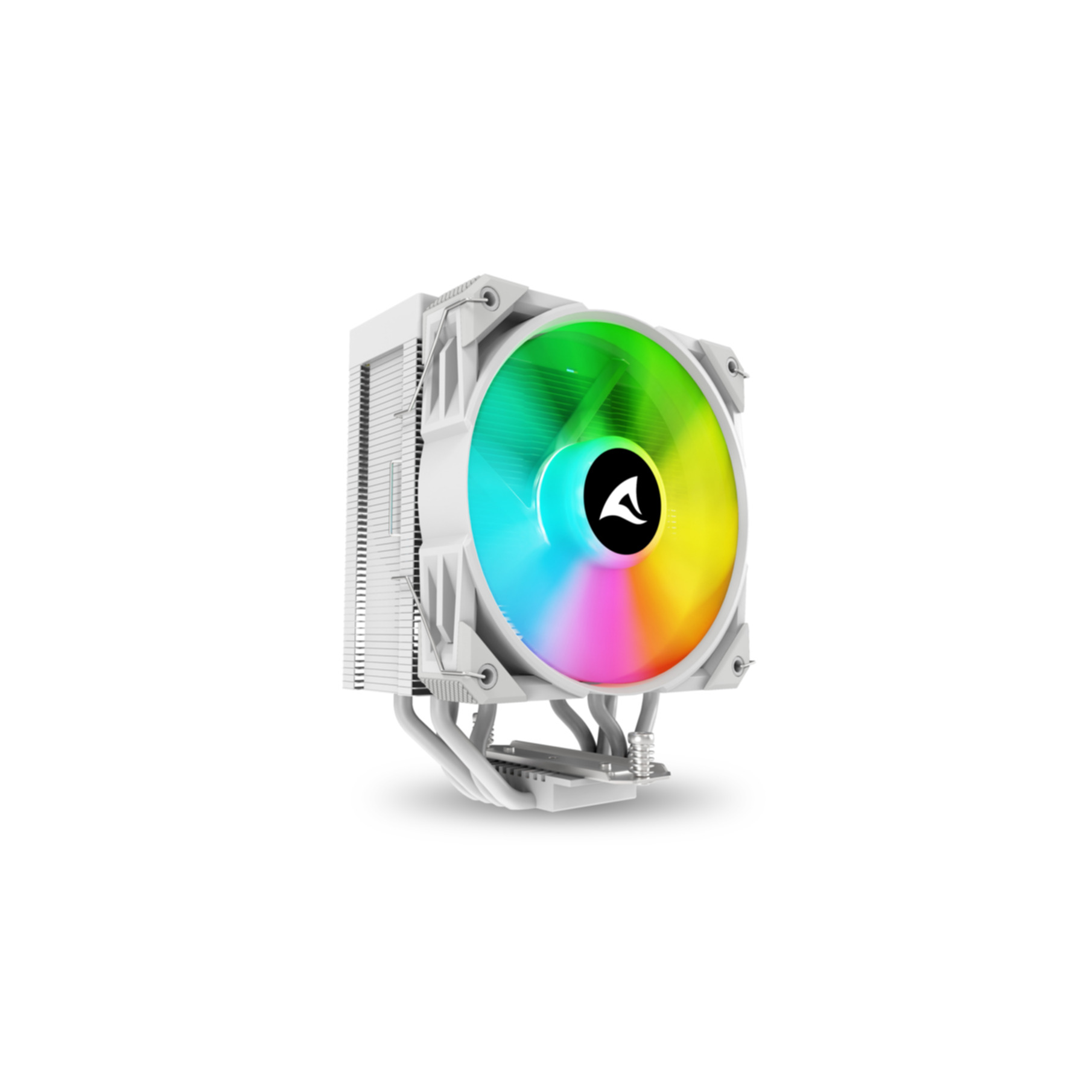
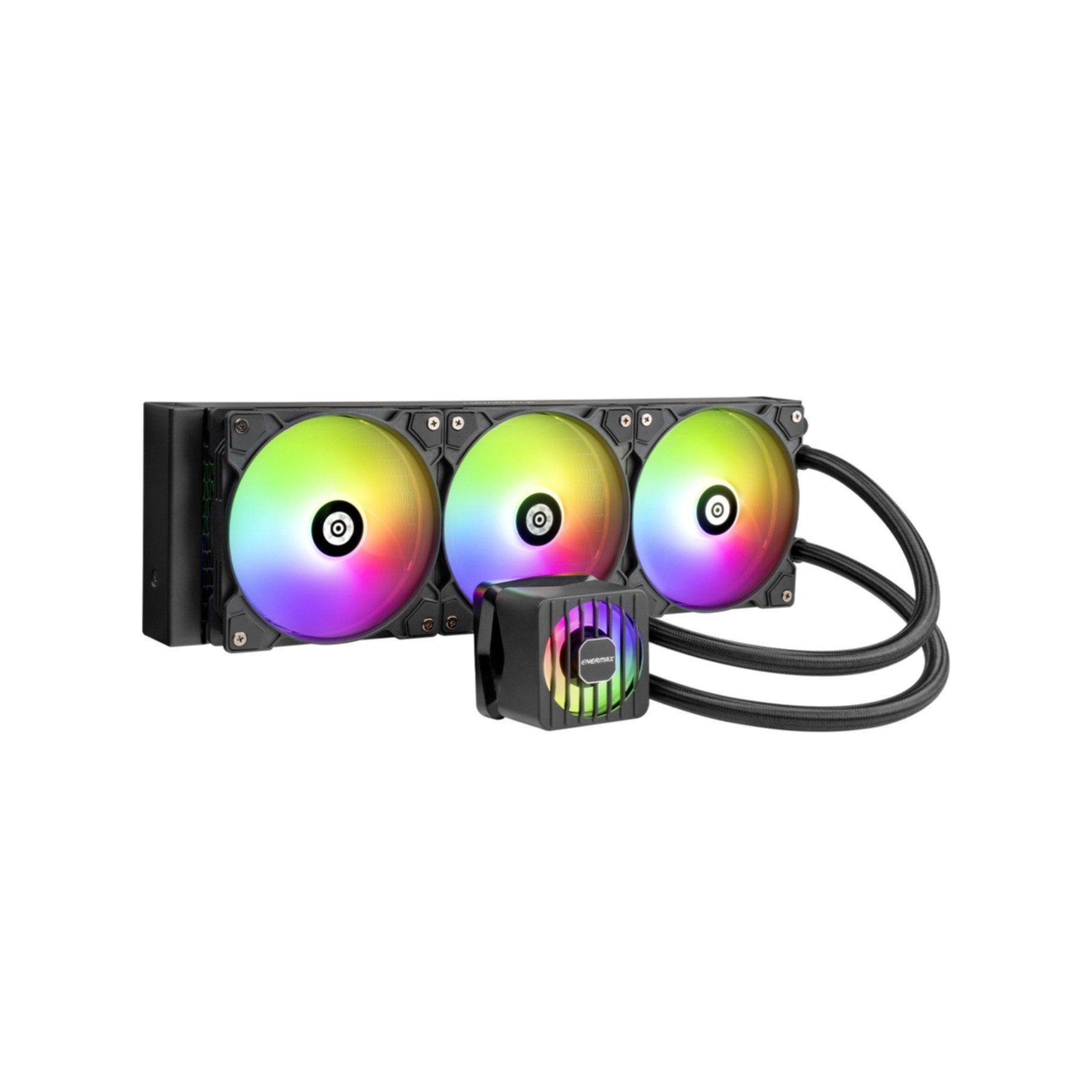
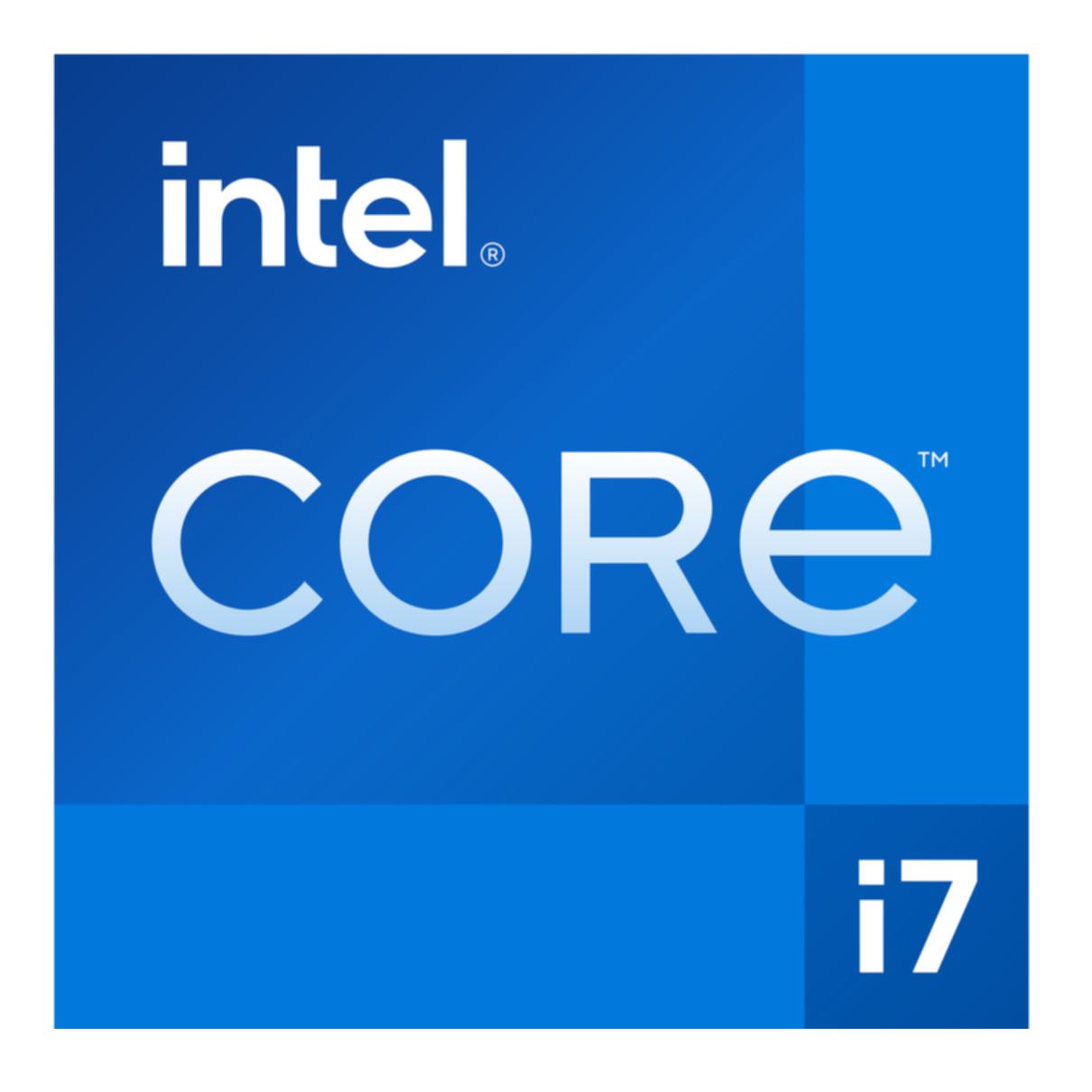
Shqyrtime
Ende pa shqyrtime.